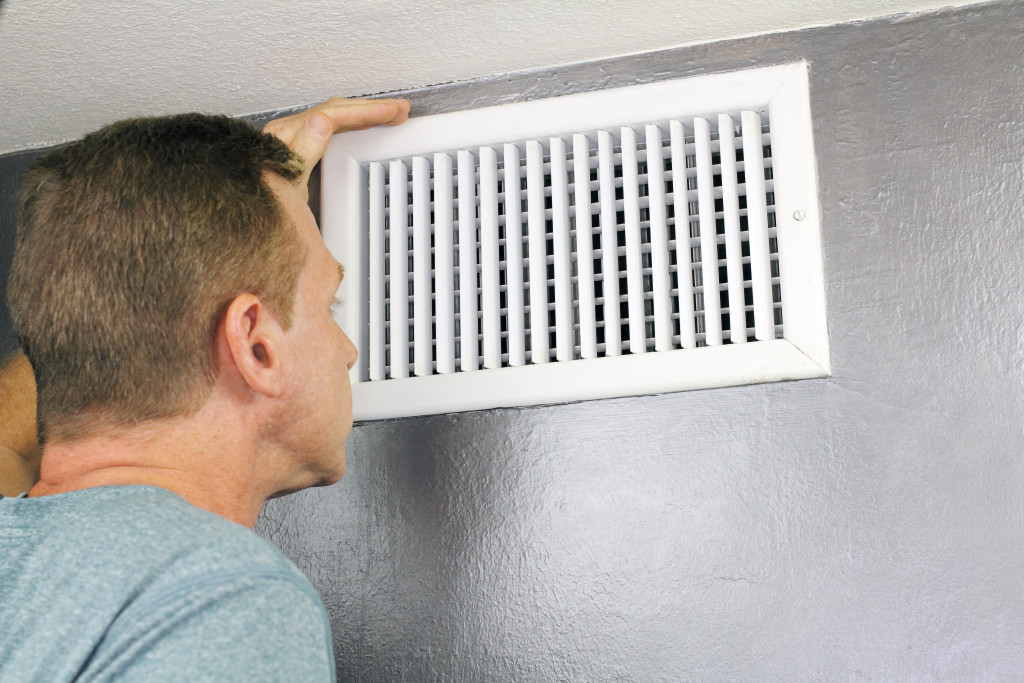- Identify sources of indoor air pollution, such as dust and dust mites, radon, and other allergens.
- Seal your air ducts to create a barrier against pollutants—open windows for fresh air from outside.
- Use indoor plants for natural air purification and to reduce mold spores.
- Consult a professional if you have any concerns or questions about air quality.
Your home is where you spend much of your time together as a family. It is also where you should feel the most comfortable and safe. However, people often overlook the air quality they breathe at home. Poor indoor air quality can cause allergies, asthma, and other respiratory problems.
In fact, according to the EPA, indoor air can be up to five times more polluted than outdoor air. This causes concern for many homeowners. Fortunately, there are several simple and effective ways to improve the air quality in your home. Here are a few steps you can take:
Identify the sources of indoor air pollution
The first step is to identify the sources of indoor air pollution. The air you breathe is vital to your overall health and well-being, but unfortunately, the air inside your home can be up to five times more polluted than the air outside. This is because many sources of indoor air pollution often go unnoticed. Here are the common causes of indoor air pollution:
Dust and Dust Mites
Dust is an inevitable part of any household, but did you know it can also contain dust mites, pollen, and pet dander? These allergens can trigger asthma and allergy symptoms and reduce the air quality in your home. To combat this, make sure you vacuum and dust your home regularly. Use a vacuum with a HEPA filter to ensure the dust and allergens are trapped and disposed of properly.
Radon
Radon is a naturally occurring gas that can seep into homes and build up over time. Exposure to high levels of radon can increase your risk of lung cancer. To prevent this, make sure your home is tested for radon levels. If elevated levels are detected, call a professional to mitigate the issue.
Seal your air ducts

Over time, air ducts can develop leaks that allow dust, pollen, and other allergens to seep into your home, compromising indoor air quality. When you seal your air ducts, you create a barrier that prevents those pollutants from entering your living spaces. But why leave this task to chance? Seek air duct sealing services from a professional team that can provide fast, reliable, and affordable solutions.
Air duct sealing services can help you identify and fix any leaks or gaps in your ductwork, ensuring your air stays clean and fresh.
Open windows
An easy way to improve the air quality in your home is to open your windows regularly. Fresh air from the outside can quickly enhance the indoor air quality of your home. Open your windows when the weather is good and let the fresh air into your space.
Opening windows is also a great way to reduce carbon dioxide levels, which can build up in spaces where people spend most of their time.
Use indoor plants
Indoor plants are natural air purifiers that filter pollutants such as benzene, formaldehyde, and trichloroethylene. They look beautiful and add a touch of nature to your living space and can also help clean and purify the air. Here are two plants you may want to consider:
1. Spider Plant
This is one of the most popular and accessible indoor plants to care for, which makes it an excellent choice for beginners. Spider plants are decorative and excellent at removing formaldehyde from the air, commonly found in household items such as furniture, glue, and carpets. They can also release carbon monoxide and benzene from the perspective. Spider plants prefer indirect sunlight and thrive in well-draining soil.
2. Peace Lily
Peace Lilies are known for their beautiful white flowers and are commonly found in offices and homes. They are great at filtering out formaldehyde, trichloroethylene, benzene, and other toxins from the air. Additionally, they are known to improve air quality by reducing mold spores. Peace lilies are easy to care for and prefer shaded areas with moist soil.
Final Thoughts
Families can take simple and practical steps to ensure clean and healthy air at home. Identifying the sources of indoor air pollution, sealing air ducts, opening windows, and using indoor plants are all effective ways to improve the air quality in your home. If you have any questions or concerns about the air quality in your home, it’s best to consult a professional who can help you assess and address the issue.


